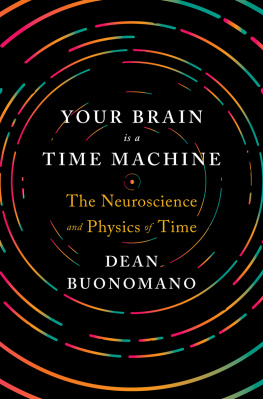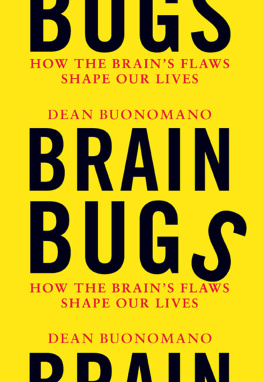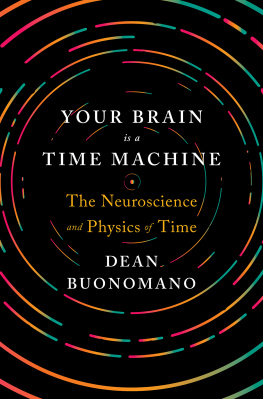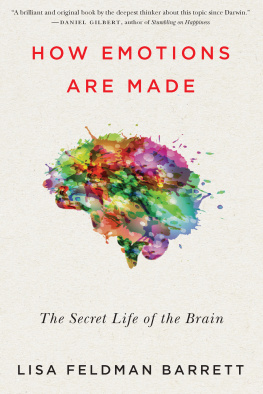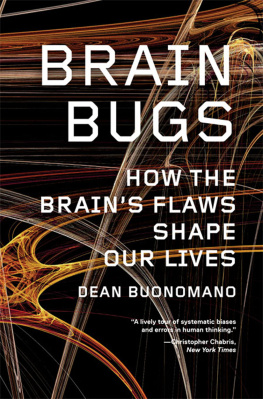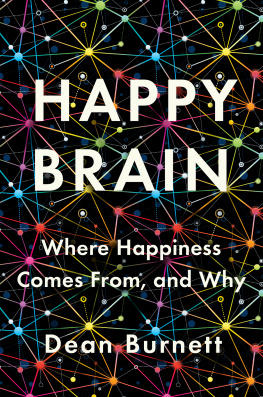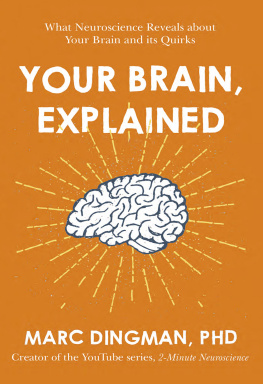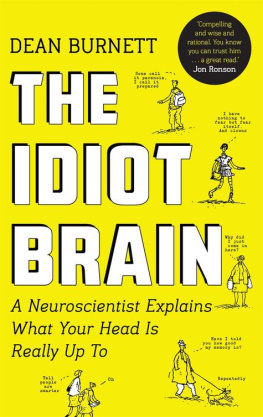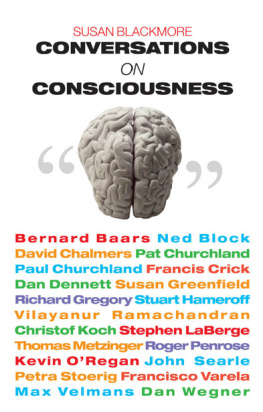
Copyright 2017 by Dean Buonomano
All rights reserved
First Edition
For information about permission to reproduce selections from this book, write to Permissions, W. W. Norton & Company, Inc.,
500 Fifth Avenue, New York, NY 10110
For information about special discounts for bulk purchases, please contact W. W. Norton Special Sales at specialsales@wwnorton.com or 800-233-4830
Book design by Ellen Cipriano
Production manager: Louise Mattarelliano
JACKET DESIGN BY JASON HEUER
JACKET ILLUSTRATION KILROY79 / SHUTTERSTOCK
The Library of Congress has cataloged the printed edition as follows:
Names: Buonomano, Dean.
Title: Your brain is a time machine : the neuroscience and physics of time / Dean Buonomano.
Description: First edition. | New York : W. W. Norton & Company, [2017] | Includes bibliographical references and index.
Identifiers: LCCN 2016046898 | ISBN 9780393247947 (hardcover)
Subjects: LCSH: BrainPhysiology. | Time perception.
Classification: LCC QP376 .B8635 2017 | DDC 612.8/2dc23 LC record available at https://lccn.loc.gov/2016046898
ISBN 978-0-393-24795-4 (e-book)
W. W. Norton & Company, Inc.
500 Fifth Avenue, New York, N.Y. 10110
www.wwnorton.com
W. W. Norton & Company Ltd.
15 Carlisle Street, London W1D 3BS

W. W.NORTON & COMPANY
Independent Publishers Since 1923
NEW YORK LONDON

All that really belongs to us is time; even he who has nothing else has that.
BALTASAR GRACIN
time
person
year
way
day
What do the words in the above list have in common?
One would certainly be forgiven for not recognizing them as the five most commonly used nouns in the English language. That the word time sits atop the list, along with two others that are units of time, is a consequence of the overwhelming importance time plays in our lives. When we are not asking for the time, we are speaking of saving time , killing time , serving time , keeping time , not having time , tracking time , bedtime , time outs, buying time , good times , time travel , overtime , free time , and my personal favorite, lunchtime .
For their part, scientists and philosophers talk about subjective time , objective time , proper time , coordinate time , sidereal time , emergent time , time perception , encoding time , relativistic time , time cells , time dilation , reaction time , spacetime , and the rather redundant Zeitgeber (time giver) time .
Ironically, although time is the most common noun, there is no consensus on how it should be defined. Indeed, the inherent challenge in attempting to define time was famously captured over 1,600 years ago by the Christian philosopher Saint Augustine: What then is time? If no one asks me, I know what it is. If I wish to explain it to him who asks, I do not know .
Few questions are as perplexing and profound as those that relate to time. Philosophers ponder what time is, and whether it is a single moment or a full-blown dimension. Physicists grapple with why time appears to flow in only one direction, whether time travel is possible, and even whether time exists at all. Neuroscientists and psychologists, in turn, struggle to understand what it means to feel the passage of time, how the brain tells time, and why humans are uniquely capable of mentally projecting ourselves into the future. And time is at the heart of the question of free will: is the future an open path, or preordained by the past?
The goal of this book is to explore and, to the extent possible, answer these questions. As we begin, however, we must first acknowledge that our ability to answer questions pertaining to time is constrained by the nature of the organ asking them. Although the gelatinous mass of 100 billion brain cells stashed within your skull is the most sophisticated device in the known universe, it was not designed to understand the nature of time any more than your laptop was designed to write its own software. Thus, as we explore questions of time, we will learn that our intuitions and theories about time reveal as much about the nature of time as they do about the architecture and limitations of our brains.
THE DISCOVERY OF TIME
Time is complicated, more so than space .
Yes, it is true that space has more dimensions than time: three values are necessary to pinpoint a location in space (for example, latitude, longitude, and elevation), whereas only one number is needed to mark a moment in time. So in some sense space is more complicated, but what I mean is that it is much harder for the human brain to understand time than space .
Consider our fellow vertebrates, with whom we share much of our neural hardware. Vertebrate animals are able to navigate through space, create an internal map of their surroundings, and in a sense, understand the concept of space. Animals migrate over large distances with a clear objective as to where in space they are heading; they remember where they stored their food; and even a puppy knows that if a treat falls behind the couch, she can try to circumnavigate the couch and access the treat from the left, right, below, or above. We know that the brains of mammals have a highly sophisticated internal map of space because neuroscientists have been recording from so-called place cells in the hippocampus for over four decades. Place cells are neurons that fire, or turn on, when an animal is located in a specific place in a roomthat is, a particular point in space. Together, these cells form a network that creates a spatial map of the external world somewhat like a GPS system, except much more flexible; for example, our internal spatial maps seem to be instantly updated when the boundaries of a room are altered or objects are moved about.
Animals can not only navigate through space, they can see it. Standing upon a mountain, we can see the sky above, the forest below, and a winding river flowing into the oceaneach in its place in space. We can also hear spacethat is, locate the point in space from where a sound is coming. Our sense of touch (somatosensation) informs us of not only the position and shape of objects, but of the location in space of our most important possessions: our limbs.
Time is different. Animals, of course, cannot physically navigate through time. Time is a road without any bifurcations, intersections, exits, or turnarounds. Perhaps for this reason, there was relatively little evolutionary pressure for animals to map, represent, and understand time with the same fluency as space. We will see that animals certainly tell time and anticipate when events will take place, but it seems unlikely that our vertebrate relatives can be said to understand the differences between past, present, and future in the same way that their brain grasps the differences between up, down, left, and right. Our sensory organs do not directly detect the passage of time. Unlike the fictional Tralfamadorians of Kurt Vonneguts novel Slaughterhouse-Five , we cannot see across time, taking in the past, present, and future at a single glance.
The brains of all animals, humans included, come better equipped to navigate, sense, represent, and understand space than time. Indeed one of the theories of how humans came to understand the concept of time is that the brain co-opted the circuits already in place to represent and understand space (). As we will see, this may be one reason all cultures seem to use spatial metaphors to talk about time (it was a long day, Im looking forward to the eclipse, in hindsight I should not have said that out loud).
Next page
